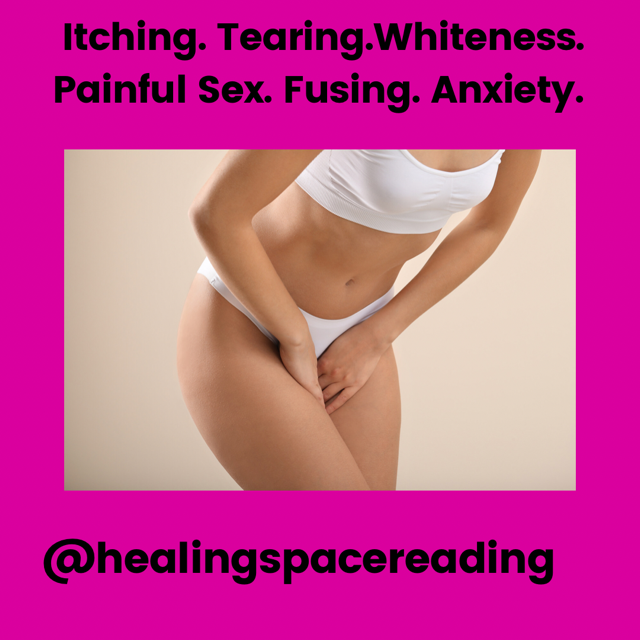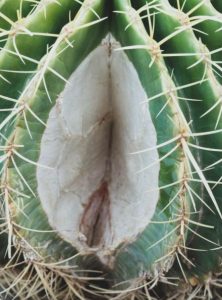First published for This is Me! Wellwoman Network Magazine – available at: https://issuu.com/theforwardthinkingtherapist/docs/final_issue_august_september_2021
Whilst thrush is often the first thing women with an itchy vulva will think of, there are many other causes of vulva itching including menopausal symptoms, irritation due to medication, latex, perfumes and washing powders and threadworms. Sex, periods, exercise, heat/moisture and friction can also be triggers for itching. If itching is also accompanied by vaginal discharge, then this can indicate an infection such as bacterial vaginosis, trichomoniasis and of course thrush.
One other often under and misdiagnosed cause of itching is a skin issue called Lichen sclerosus (LS).
LS can affect people of all ages (earliest recorded is 18 months) although more commonly pre-pubescent girls and menopausal women and has a slight (3-5%) risk of turning cancerous. Childhood LS often resolves with puberty although it can continue into adulthood.
Therefore, it’s worth being aware of what your vulva looks like even if you don’t have symptoms (like regular breast self-exams) and any changes that might occur as LS can have a significant impact on people’s lives.
LS is typified by white patches on the skin anywhere on the body but most often on the vulva, penis and anus. The main symptom is intense itching, especially at night which affects sleep. Alternatively, burning, sore and inflamed vulva or penis may be the main symptom instead of itching.
Skin becomes thin and raw, tearing easily during sex or a bowel movement, or often for no reason. Over time, skin affected by LS can thicken, become scarred and atrophy (shrink and tighten). There can be ‘architectural changes’ where the labia fuses or even in some cases disappears. The entrances to the urethra and vagina can become tighter and the clitoral hood can fuse. These changes can cause pain and problems peeing, pooing, having sex and orgasming. In severe cases, surgery may be required to widen or uncover your vagina opening and clitoris.
The emotional impact of LS is rarely discussed. An LS diagnosis can be devastating. Constant itching is distressing and embarrassing. Changes that can occur to a women’s vulva can impact on feeling feminine as well as relationships, let alone the pain of simple things like sitting and walking. Anxiety that the LS will become malignant can be overwhelming.
Diagnosis is usually based on appearance. But if there is a doubt (as LS can present like other skin conditions such as Lichen planus), then a biopsy will be taken.
Helen* told me that she was unable to wear jeans as they were too uncomfortable and she rarely had sex because it was so painful and led to tearing over the whole vulva. Her husband was very understanding but it had impacted on her relationship.
Sarah* said her LS had progressed to such an extent that her inner labia had fused to her outer labia and her clitoral hood had also fused which was very painful and made orgasm difficult and sex impossible. Itching was very distressing and keeping her awake. .
The cause of LS is unknown. However, about 1 in 3 people have another autoimmune disease such as thyroid disease, vitiligo, or pernicious anaemia. Many women have told me that stress aggravates their LS symptoms and they have often had significant emotional trauma in the years preceding their symptoms starting.
There is thought to be an inherited risk (12%) but symptoms are often not discussed with family so the true extent may be more. Some studies show a link to Lyme disease. Trauma can also increase the risk of LS which starts in surgical wounds and following radiotherapy and sunburn. LS can be triggered by pregnancy or more commonly after childbirth trauma such as at the site of an episiotomy or tearing.
My own LS started 14 years ago after I had a fast vaginal birth with a 9lb 4 oz baby. My ‘what I thought was thrush’, itching became insane and my thyroid levels were unstable (I already had Hashimotos and Crohnes Disease). I have since realised my thyroid levels being out of range will cause a flare up.
Conventional treatment for LS is a high dose prescription steroid cream to reduce inflammation applied regularly for three months. After the first three months, it may only be necessary to use the ointment or cream once or twice every week to keep symptoms away.
However, some people are reluctant to use steroid cream in such a delicate area or find the steroid creams aggravates. There are other things that help them reduce symptoms (either alongside or instead of steroid cream) including:
- Avoiding certain foods – Gluten, dairy, sugar, soya and high oxylate foods are common irritants for LS sufferers.
- Considering what goes on your skin and what you wash your clothes with. Avoid synthetic fragrances and ingredients as these can increase the itch and burn of LS. Petroleum based products can be especially aggravating to some people. Wash with emollient soap substitutes or natural products.
- Moisturise daily and find a soothing cream/ointment – Most of us put moisturiser on our face and bodies but how many moisturise their vulva? As we get older our skin becomes less elastic and supple. Commonly used creams that people find soothing include; Luca’s Papaw Ointment, Emuaid, Calendula Oil, Perrins Naturals, CBD Oil, Coconut Oil (always apply after a shower as it can be drying), and V Magic. It can be trial and error to find what works for you personally.
- Toilet paper can be irritating – try an unbleached brand or clean yourself with water instead.
- Use lubricants if sex is uncomfortable.
- Wear cotton/silk underwear and loose clothing.
- Homeopathic remedies – homeopathy addresses symptoms on a physical, emotional and mental perspective and is individualised to each person.
- Soaking in a Borax solution is controversial but many women in support groups report it helps stop and reverse fusing.
If you are itchy do not assume you have thrush and self-treat it. Talk to your doctor. And return to your doctor if symptoms do not resolve with treatment. Despite LS not being contagious or caused by not washing enough, Helen* had first been told that her itching and burning was due to poor hygiene, which resulted in her being too embarrassed to seek further treatment for another 10 years – by which point her vulva had started to fuse.
Vulval exams should be part of your monthly self-care so you know your own ‘normal’ (as there is no normal vulva!) or what changes might be happening. Persistent pain and/or a lump or ulcer that doesn’t go away should ALWAYS be discussed with your doctor. And don’t forget as LS can affect children, that any itching they have needs checking out.
Further Support is available at:
Association for Lichen Sclerosus – https://www.lichensclerosus.org/
Sharing is Caring – Lichen Sclerosus et al – www.facebook.com/groups/1329440753906331
Lichen Sclerosus -sclerosis- UK Support Group For Women – https://www.facebook.com/groups/221930761513570
Lichen Sclerosus UK Natural Support Group – https://www.facebook.com/groups/128295724617899


